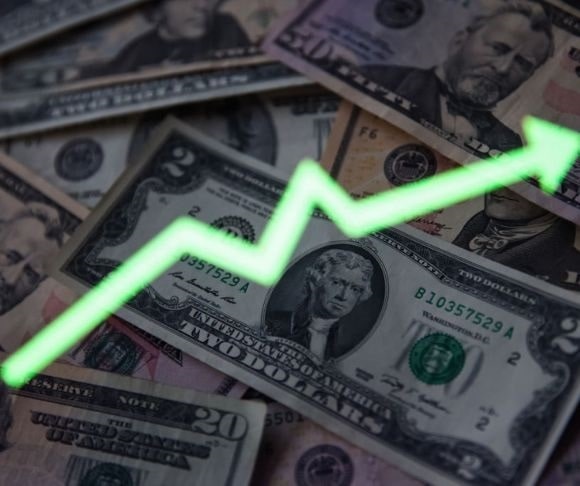Last year, you were a part of something rare and amazing. If you parked your money into pretty much any investment, you received a positive return – from modest to immense – as nearly every segment of the financial markets produced gains. What made it even more remarkable was that it took place against a backdrop of a U.S.-China trade war, political turmoil in Washington, geopolitical tensions, and an anxious Federal Reserve lingering in the background. However, this euphoria may be clouding investors’ judgment moving forward as there are many holes beginning to form throughout the economy. Everyone might experience 1929 and 2007 again.
Forging a Corporate Bond
Last year, S&P Global Ratings recorded some of the most bearish positions on U.S. corporate debt than at any other time in the last decade, according to new data compiled by Bloomberg.
 The business news network discovered that the credit rating agency published downgrades for 676 corporate bond issuers compared to 352 upgrades. This resulted in an upgrade-downgrade ratio of 0.52 for 2019, the lowest since 2009 when it was 0.29. S&P’s ratio analysis peaked in 2013 when it reached 1.54, and it has been tumbling ever since.
The business news network discovered that the credit rating agency published downgrades for 676 corporate bond issuers compared to 352 upgrades. This resulted in an upgrade-downgrade ratio of 0.52 for 2019, the lowest since 2009 when it was 0.29. S&P’s ratio analysis peaked in 2013 when it reached 1.54, and it has been tumbling ever since.
Many of the downgrades were situated in the high-yield part of the market. Energy firms experienced most of the rating cuts, recording a ratio of 0.28, which was the lowest of any industry. On the other hand, the financial and utility industries were given more upgrades than downgrades from S&P.
This has not stopped investors from pouring into American debt. Traders jumped in to the U.S. bond market and took advantage of higher rates because overseas investors were offered subzero interest rates. For the investment community, the move paid dividends: Investment-grade U.S. corporate debt returned a 10-year high of 14.5% and the Bloomberg Barclays U.S. Aggregate Bond Index rose 8.7% – the best annual performance since 2002.
 With sales of U.S. high-grade bonds already anticipated to total as much as $35 billion for the week of January 6, you might expect similar results in 2020, especially if the rest of the world is still adopting ZIRP and NIRP. Does this bullish sentiment suggest the fundamentals are sound or is there something brewing? Perhaps the answer lies in the numbers.
With sales of U.S. high-grade bonds already anticipated to total as much as $35 billion for the week of January 6, you might expect similar results in 2020, especially if the rest of the world is still adopting ZIRP and NIRP. Does this bullish sentiment suggest the fundamentals are sound or is there something brewing? Perhaps the answer lies in the numbers.
Living on Borrowed Time
After more than a decade of historically low interest rates, companies have sold record amounts of bonds to yield-starved investors. In total, U.S. corporate debt has topped $10 trillion – other estimates say it is as high as $15 trillion. Some of the nation’s biggest companies, such as General Motors, AT&T, and CVS Health, have been spending borrowed capital. This is the greatest debt binge among corporations in American history, representing about half of the overall gross domestic product.
Because the Federal Reserve initiated a mid-cycle adjustment last year – a blend of rate cuts and monetary expansion – corporate debt levels could increase again in 2020. The companies taking advantage of the current conditions are the hemorrhaging firms with minimal growth.
It is already evident that this is unsustainable for corporations. A growing number of businesses are having a hard time maintaining their debt-servicing payments. While there has yet to be a tsunami of defaults in the United States, Oxford Economics recently sounded the alarm on approximately $4 trillion of maturing bonds that will come due over the next five years.

(Photo by Jakub Porzycki/NurPhoto via Getty Images)
Corporate profits are declining, the leveraged loan market has topped $1.2 trillion, and $2.5 trillion of investment-grade bonds are on the verge of being slapped with a junk rating. These are the toxic ingredients of a recipe for disaster. Should there be any slight-to-significant economic slowdown and financial institutions become less willing to lend, then a failure to roll over maturing debt might seep into the rest of the economy and cause monumental job losses comparable to the Great Recession – or worse.
Before you think this is confined to the U.S., the rest of the world is bracing for a corporate bond bomb to go off. And, in some markets, it already has.
Made in China
In its bi-annual “Global Financial Stability Report,” the International Monetary Fund (IMF) warned that 40% of all corporate debt in major economies could be categorized as “at-risk” in the event of another global downturn. The study authors, who blamed the low-rate environment for these trends, noted that corporate debt levels could exceed those of the financial crisis in 2008 and 2009.
China is bracing for a corporate debt crisis as onshore firms are defaulting on their bond obligations. In 2019, corporate bond defaults totaled more than 150, up from the previous year’s record of 120. This led to $18.7 billion in missed payments, up from $17.5 billion in 2018, which is quadruple the figure from 2017. Moody’s Investors Service forecasts as many as 50 new, first-time defaulters in 2020. The defaults will keep on coming in the years to come because Beijing will push banks to lend to companies as the People’s Bank of China (PBoC) repeatedly cuts the reserve requirement ratio.
This explains why Moody’s and Fitch Ratings have declared Chinese corporate debt as the “biggest threat” to the global economy.
The Titanic
The Federal Reserve is mirroring China by pumping tens of billions of dollars of liquidity into Wall Street over the last few months to save repo markets, monetize the debt, and stimulate credit markets.
On the surface, the U.S. economy is the best it has ever been; a titanic that is attracting eager travelers from all over the world. Much like the real ship, there are underlying fundamental problems with the American economy that could eventually spell doom once the nation hits the iceberg – and there will not be a sappy love story between Jack and Rose to save us from the reality of financial ruin. The corporate debt bubble is one of the many issues metastasizing into a monster that will eat the economy alive.
~
Read more from Andrew Moran.




